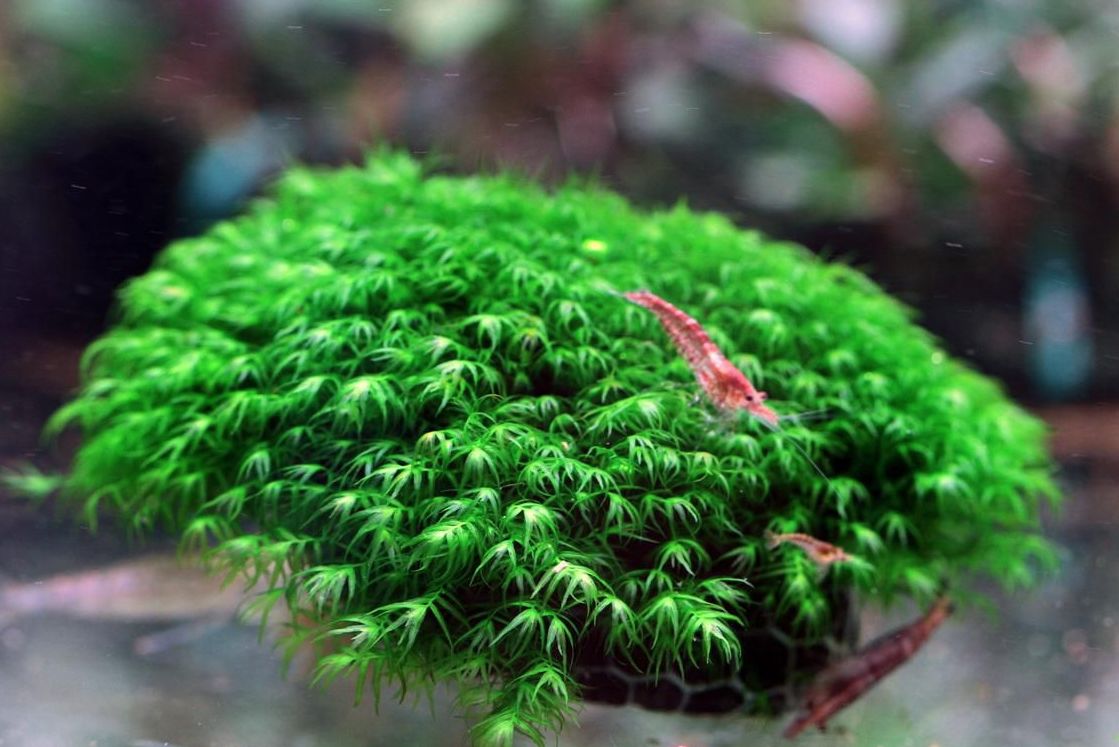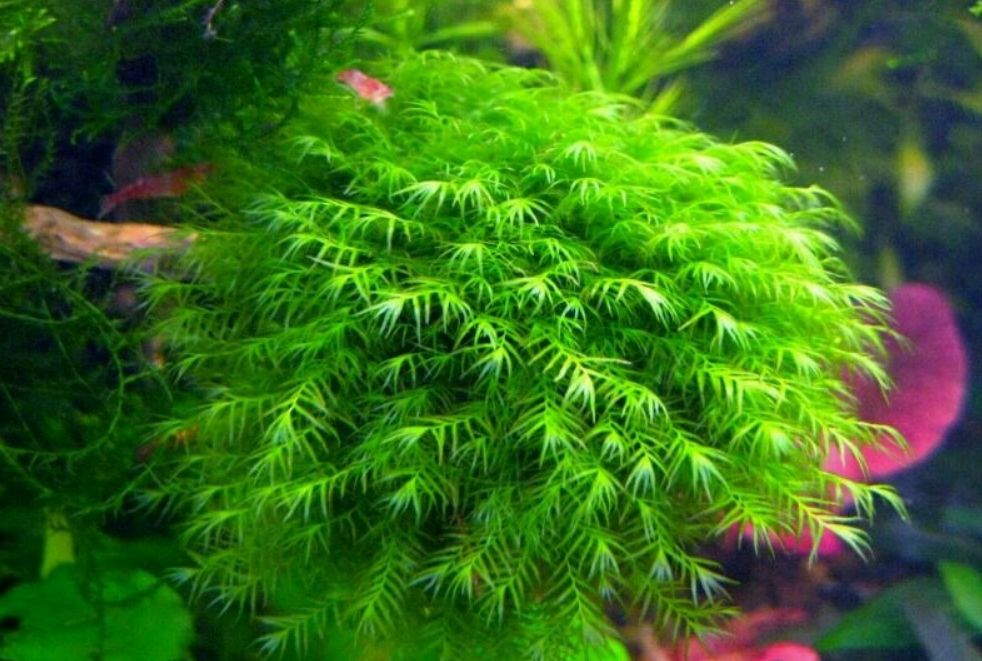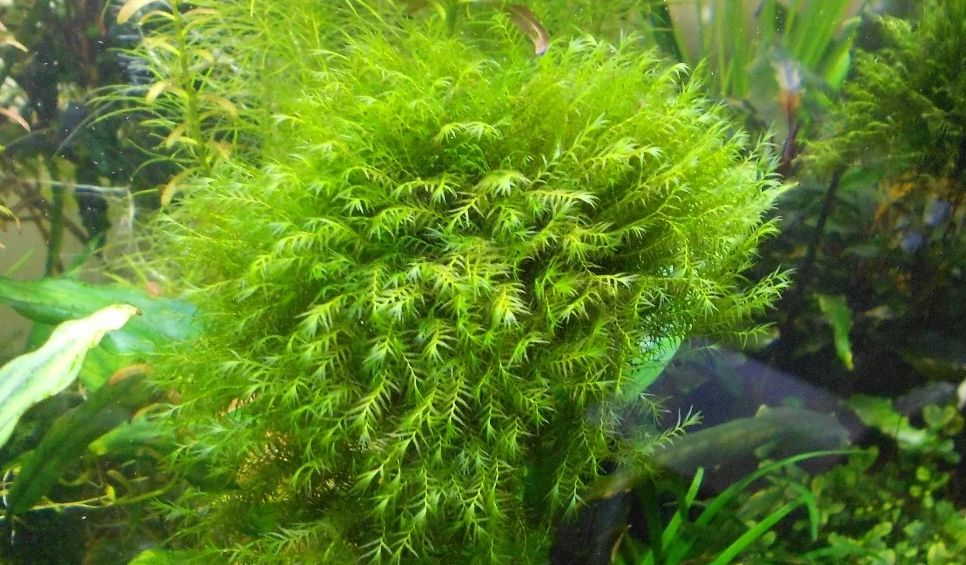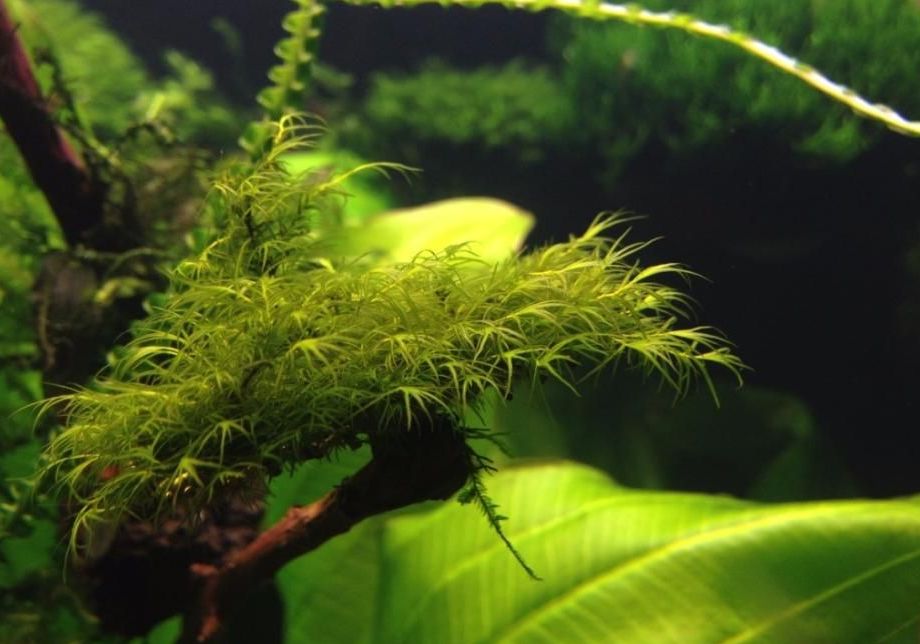Phoenix moss (Fissidens fontanus) got its Latin name due to the fact that its appearance resembles a frozen fountain – the plant grows from the center in many different directions like a streaming fountain. With the help of this moss you can create spots that will definitely attract spectators attention to your aquascape.

Contents
Plant Habitat in the wild
Phoenix moss is a plant from Hypnaceae family. Fissidens genus numbers up to 400 kinds and it is considered as one of the largest among mosses. Fissidens is translated as a ‘split beard’. Despite all the variety of the moss kinds available, Fissidens Fontanus is the most often used one.
The moss habitat is in North America, but it has become popular among aquascaping fans all over the world. This kind of Fissidens is an aquatic one and that’s why it grows well.
It has rhizoids that strongly stick to a substrate and you don’t have to knit the moss up to the substrate all the time. The moss got the name in Taiwan and this is a trade name.

Description
Phoenix moss has branches up to 1 inch (2,5 cm) long. Leaf blades are narrow, elongated and sharpened. On the stem all the leaves are located in sequence. Fissiden moss can be considered as a large aquarium moss. Its leaf is up to 2 mm long.
Such a large leaf can’t be eaten by siamese algae eater, which is a famous moss eater; that’s why you can successfully keep them both in one tank. Due to its small size moss grows from the center in various directions. Even from the tiniest branch you put in a tank you will get the whole bushy hillock in a month.
Phoenix moss always grows as a round shaped hillock regardless of the way you cut it, so there is no way to change the way it grows. No matter how you plant or cut it, the moss will still tend to have round shape just because this is the way it grows.
However, the good thing is that you can move this hillock from one spot of the tank to another without damaging the plant.
| Characteristic | Description |
|---|---|
| Common Name | Phoenix moss, Phoenix feather moss |
| Scientific Name | Fissidens fontanus |
| Family | Fissidentaceae |
| Appearance | Bright green with fern-like fronds, densely packed shoots |
| Origin | North America |
| Growth Rate | Slow to moderate |
| Lighting | Moderate to high |
| Temperature Range | 68-82°F (20-28°C) |
| Water Parameters | pH: 6.0-7.5, Hardness: 2-15 dGH |
| Propagation | Fragmentation and attachment to new surfaces |
| Maintenance | Regular trimming and pruning to maintain shape and density |
| CO2 Supplementation | Beneficial, but not mandatory |
| Fertilization | Beneficial, liquid fertilizers |
| Compatibility | Compatible with a wide range of fish and invertebrates |
| Aquascaping Uses | Moss walls, accent plant on rocks/driftwood |
| Challenges | Susceptible to algae growth, requires balanced maintenance |
| Cleaning | Gentle rinsing in aquarium water during water changes |
| Emersed Cultivation | Possible in high humidity, indirect light in terrariums |
| Natural Habitat | Freshwater rivers, streams, low-flow water conditions |

Difficulties in keeping
The fissiden moss easily sticks to any substrate using its rhizoids: this can be stones, snags and even plastic net. It will do for tanks with low illumination level and without CO2 supply, but it grows slowly provided with such conditions.
It is important to maintain the tank water clean to prevent algae growing in the moss bushes. Phoenix moss is susceptible to algae growth if lighting, water parameters, or maintenance routines are not adequately balanced. Regular water changes and controlling nutrient levels help prevent algae issues.
Keeping in a tank
As most of mosses phoenix can grow in a tank with low lighting level and actually almost without additional CO2 fertilizers supply or micro- and macro-fertilizers. Also like other moss kinds this one is demanding in terms of water cleanness. Algae may start to grow due to suspended matter that settles on the moss leaves.
This is why in tanks with phoenix moss you may often encounter cherry shrimps, for which organic remnants are perfect food supply. Filtration is a must in this case, since it not only purifies water, but also it creates water flow which is necessary for the moss. Without filtration the plant itself starts to absorb rot off organics as a sponge.
The water flow shouldn’t be strong. Moderate water movement should be present all over the tank volume preventing formation of quiescent areas.
Water parameters
Phoenix moss thrives in a pH range of 6.0 to 7.5. It can tolerate slightly acidic to slightly alkaline conditions. The preferred water hardness for Phoenix moss is between 2 to 15 dGH (degrees of General Hardness). This range covers a moderate to moderately hard water hardness.
Phoenix moss is suited for tropical aquarium setups. It does well in a temperature range of 68 to 82°F (20 to 28°C). Keeping the water within this range is important for its overall health and growth.
Lighting
It thrives in moderate to high lighting conditions. Providing sufficient light will promote healthy growth and prevent the moss from becoming thin and sparse.
CO2
While not mandatory, providing a moderate level of carbon dioxide (CO2) supplementation can enhance the growth and overall health of Phoenix moss. In a tank with strong lighting and CO2 supply the moss growth rate is sufficiently higher.
Nutrients
Phoenix moss (Fissidens fontanus) benefits from a nutrient-rich environment to support its growth and overall health. While it can obtain some nutrients from the water column, providing additional nutrients through the liquid fertilizers can enhance its development.

Application in aquascaping
Phoenix moss looks perfectly in a standard aquarium with fishes and it naturally fits into small nano tanks. It is used either as a monoculture or together with other moss kinds and tank plants.
Fluffy hillocks can be put somewhere on top, they are used to decorate stones, snags, to fill cavities or even aquatic gardens can be made from them. Phoenix moss can stick to any surface. To fix it on the net place all the moss brunches at equal distance from each other and tie them with a thread in increments of 3-4 mm.
In 1.5 months the whole net will be covered with vegetation. It is not necessary to use sea-line to fix phoenix moss, since this kind of moss grows fast and till the thread rots it will already strongly stick to the substrate. Even if you just leave one brunch of the moss on a stone or a snag in a tank, in a few month it will grow into a dark-green round-shaped hillock with rather specific structure.
When decorating a tank it’s better to put fissiden moss closer to focus points and not in the tank corners, since it will inevitably draw spectators attention to itself even if other moss kinds are also present in a tank.
There is an exception in case when almost all the tank is planted with phoenix moss, which looks incredible as well.
Propagation
Phoenix moss propagates through fragmentation. You can separate sections of the moss and attach them to new surfaces using thread, glue, or mesh. Over time, they will grow and attach themselves naturally. Small moss bunches are tied with a thread or sea-line and they are fixed to a net. In a few days moss starts to stick to the net on its own gradually covering all the surface.
In the wild phoenix moss uses spore reproduction. Its spores are formed in a special seed case called sporangia. When sporangia ripens and cracks the spores get directly onto a parent plant where they further develop.
Sources: